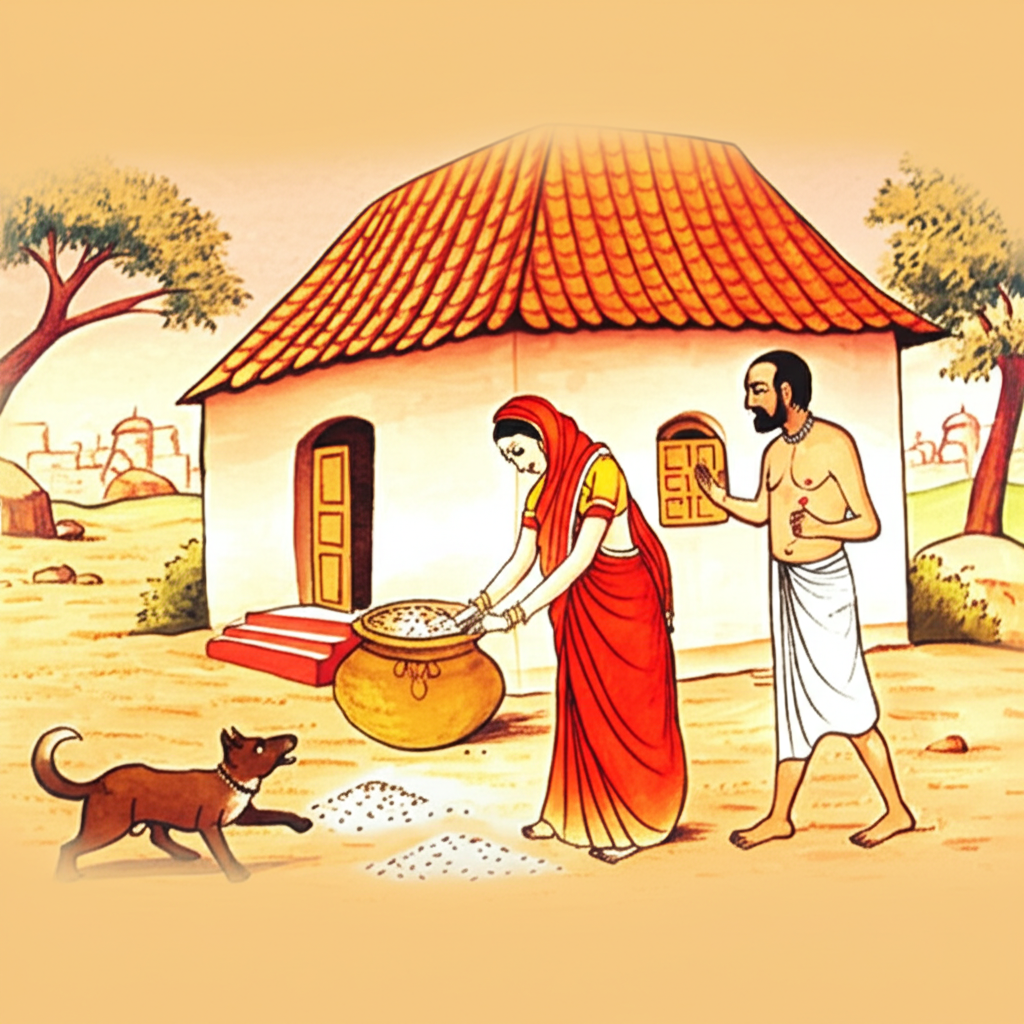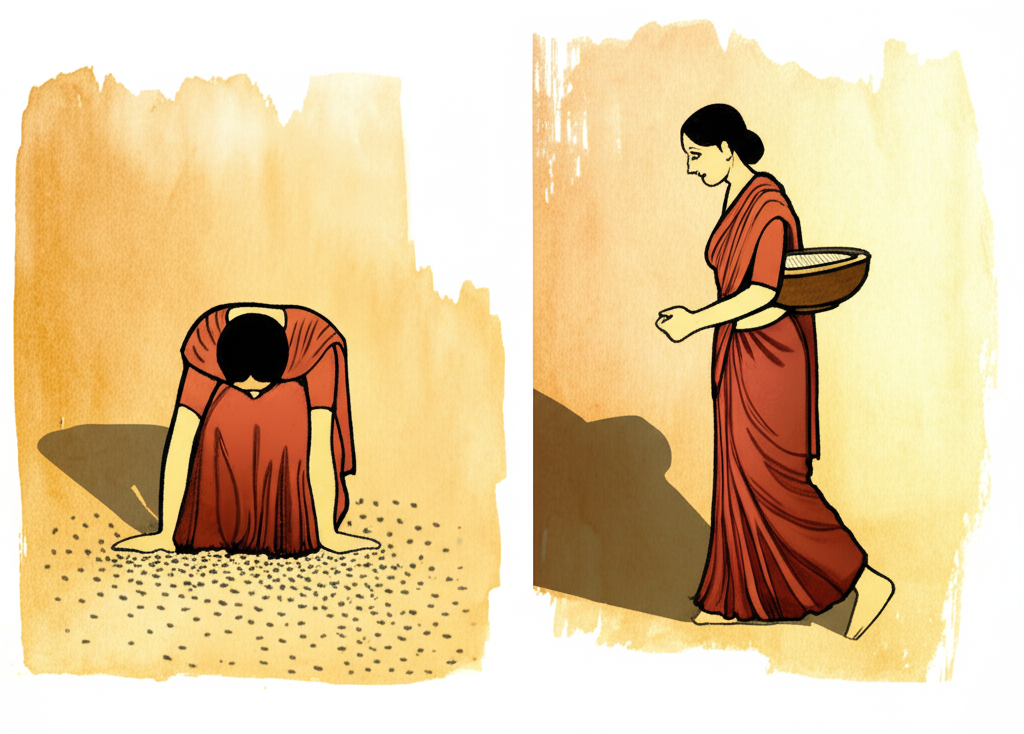
Once upon a time, a kind Brahmin and his wife, Shandili, lived near a city. They were happy but didn’t have much money.
One day, the Brahmin said, “Tomorrow’s a special festival! Let’s give some food to a hungry person. I’ll go to the city and get some extra food. You should also invite a Brahmin for a meal and give them some clothes.”
Shandili worried, “But we’re poor! We don’t have extra food or clothes!”
The Brahmin said, “Even if we only have a little, we should share it.”
Shandili agreed. “I have some sesame seeds,” she said. “I’ll clean them and make a tasty dish.”
The next morning, the Brahmin went to the city. Shandili cleaned the sesame seeds, dried them in the sun, and did her chores.
A naughty dog came and messed up the sesame seeds! Shandili was sad. She thought, “I’ll trick my neighbor! I’ll trade my clean sesame seeds for her dirty ones. She’ll be happy because cleaning them takes a long time.”
Shandili went to her neighbor and offered the trade. The neighbor was excited! But then, her son said, “Mom, that’s too good to be true! Don’t trade!”
The neighbor listened to her son and didn’t trade. Shandili went home.

The story teaches us: When something sounds too good to be true, think carefully before you do it!